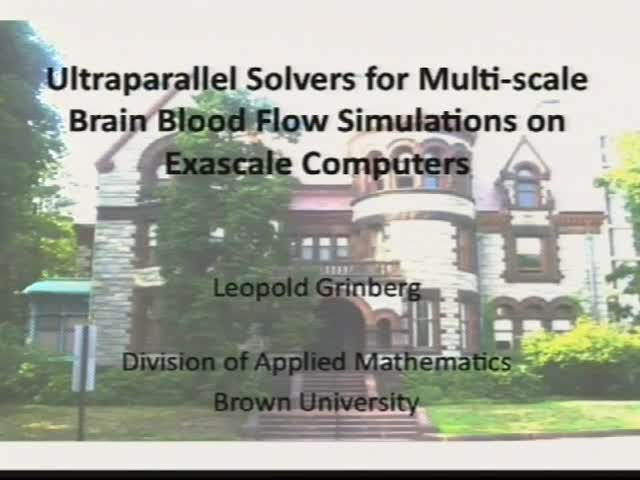Ultraparallel solvers for multi-scale brain blood flow simulations on exascale computers
Presenter
January 13, 2011
Keywords:
- Multi-scale and multi-physics solvers; heterogeneous computer architecture; exaflop computing; blood flow simulations
MSC:
- 65D18
Abstract
Solvers for coupled multi-scale (multi-physics) may be constructed by
coupling an array of existing and well tested parallel numerical
solvers, each designed to tackle a problem at different spatial and
temporal scale. Each solver can be optimized/designed for different
computer architecture. Future supercomputers may be composed of
heterogeneous processing units, i.e., CPU/GPU. To make an efficient
use of computational recourses, the coupled solvers must support
topology-aware mapping of tasks to the processing units were the best
parallel efficiency could be achieved.
Arterial blood circulation is a multi-scale process where time and
space scales range from nanoseconds (nanometers) to seconds (meters),
reciprocally. The macro-vascular scales describing the flow dynamics
in larger vessels are coupled to the meso-vascular scales unfolding
dynamics of individual blood cells. The meso- vascular events are
coupled to the micro-vascular ones accounting for blood perfusion,
clot formation, adhesion of the blood cells to the arterial walls,
etc. Besides the multi-scale nature of the problem, its size often
presents a substantial computational challenge even for simulations
considering a single scale.
In this talk we will try to envision the design of a multi-scale
solver for blood flow simulations, tailored to heterogeneous computer
architecture.
